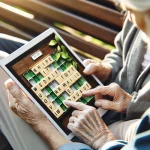The Journal of Field Robotics recently published a study titled “Autonomous navigation method based on RGB‐D camera for a crop phenotyping robot,” which explores a novel method to enhance the efficiency of crop phenotyping robots. Phenotyping robots are crucial for gathering crop phenotypic traits on a large scale, and improving their autonomous navigation capabilities significantly boosts data collection efficiency. In this study, an RGB‐D camera is utilized alongside the PP‐LiteSeg semantic segmentation model to enable real-time and accurate crop area detection, leading to more efficient autonomous navigation. The research brings new insights into the agricultural robotics field and has potential implications for future technological advancements.
Innovative Navigation Technology
Autonomous navigation technology plays a pivotal role in improving the functionality of phenotyping robots. The RGB‐D camera captures both visible and depth data, which are then processed using the PP‐LiteSeg semantic segmentation model to distinguish crop areas in real-time. By extracting navigation feature points and computing their three-dimensional coordinates, the system determines angle deviation (α) and lateral deviation (d). These deviations are corrected in real-time using fuzzy controllers, ensuring precise navigation of the phenotyping robot across crop fields.
The system also incorporates end-of-row recognition and row spacing calculation, enhancing the robot’s ability to autonomously turn and transition between rows. This method demonstrates a high level of accuracy, with the PP‐LiteSeg model achieving a testing accuracy of 95.379% and a mean intersection over union of 90.615%. The navigation performance is equally impressive, with an average walking deviation of 1.33 cm and a maximum deviation of 3.82 cm, ensuring minimal errors during operation.
Experimental Validation
The experimental results validate the effectiveness of the proposed autonomous navigation method. The method’s robust performance is further evidenced by the low average error in row spacing measurement, which stands at 2.71 cm, and a perfect success rate in row transitions at the end of each row. These metrics underscore the system’s potential in supporting the autonomous operation of phenotyping robots, which can lead to more efficient and accurate crop data collection.
Comparing this study with earlier research on phenotyping robots reveals a significant advancement in autonomous navigation. Previous methods often relied on less precise sensors and algorithms that could not achieve the same level of real-time accuracy. The integration of RGB‐D cameras with the advanced PP‐LiteSeg model marks a substantial improvement, addressing limitations related to navigation precision and operational efficiency.
Earlier studies focused on enhancing individual components of phenotyping robots, such as improving sensor accuracy or developing better segmentation models separately. However, this integrated approach combining real-time semantic segmentation with precise fuzzy control algorithms presents a comprehensive solution that outperforms past attempts. The 100% success rate of row transitions further highlights the robustness and reliability of the new system.
The advancements presented in this study provide valuable insights into the development of more efficient phenotyping robots for large-scale agricultural applications. The high accuracy and low deviation metrics suggest that this navigation method can significantly enhance data collection processes, making it a useful tool for researchers and farmers alike. Understanding the role of advanced image processing techniques and control algorithms in improving robotic navigation can inform future innovations in agricultural technology.
- RGB‐D camera and PP‐LiteSeg model enhance phenotyping robot navigation.
- Accurate real-time crop area detection and deviation correction achieved.
- Study shows significant improvements over previous navigation methods.










